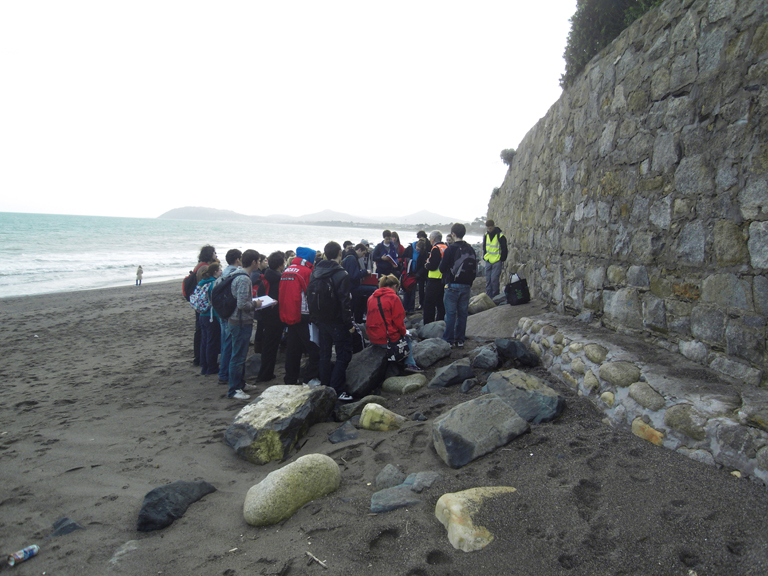Student Field Trip - Dalkey Quarry and White Rock
Field course itinerary
Stop 1 Dalkey Quarry
Observe features associated with the interior of a granite pluton. Make a labelled orientated sketch of a quarry face, giving a scale, labelling joints and pale-coloured dykes of pegmatite and aplite in the granite. What size are the crystals in the pegmatite dykes seen by the path beside the steps?
Stop 2a Viewpoint near the summit of Dalkey Hill
Observe the panoramic view looking north and west. Pick out topographic features and record their names along with the names and geological ages of the associated rock-types on a simplified map of the Dublin area.

Stop 2b Overview of Killiney Bay from path descending the south side of Dalkey Hill
Record on the same map the features and geology looking south.
Write a description of the fresh granite outcropping beside the path. How does it differ from the granite from Three Rock Mountain (samples provided for comparison)? Note how quartz, feldspar and mica in granite can be recognized.
Stop 3 Cliffs and foreshore at White Rock
Observe thermally metamorphosed sedimentary rocks, and the dykes and larger intrusions of aplite cutting them.
Working in groups, first make a neat but simple map of the boundary between solid rock and beach going from the access path for about 50 m east. Give an approximate scale and mark the direction of north.
Make various labelled sketches to show features in the country rock, such as bedding and cleavage, joints, aplite dykes cutting bedding, andalusite-rich rock, lenses of quartz. Show the locations of your sketches on your simple map. Estimate the dip of the bedding in at least two places and mark this on the map.
As a separate exercise sketch the speckled grey-green rock in boulders at the top of the beach to the south of the path. These boulders were imported. Why? They are probably from a quarry in Ordovician volcanic rocks near Arklow.
Your report on the field trip should consist of (1) labelled sketches and responses to questions relating to the stops above, (2) a coloured annotated version of the map below with a geological key, and (3) a brief summary of the geological history of the Dublin area.

